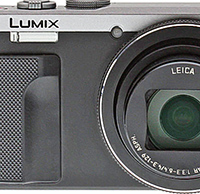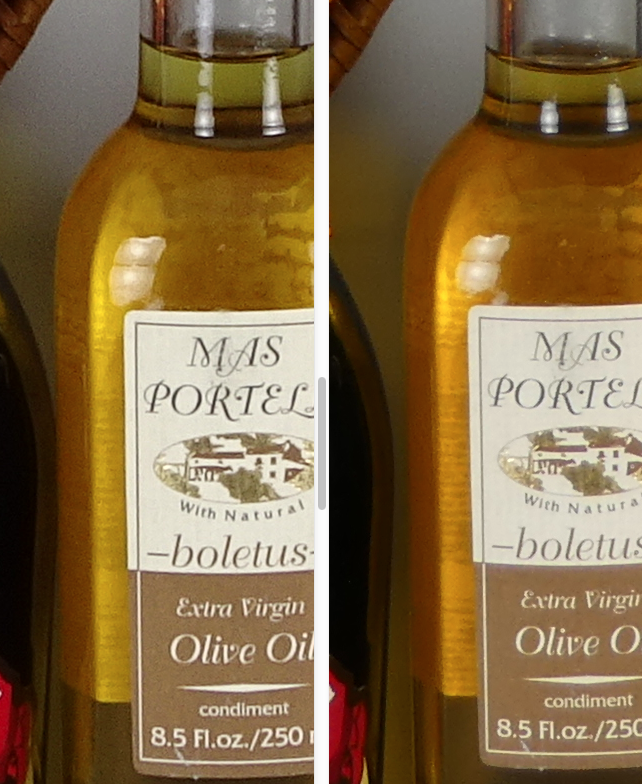Panasonic ZS60 First Shots: Is the move back to higher res a good thing for such a small sensor?
posted Tuesday, February 9, 2016 at 4:12 PM EST

In early 2015 Panasonic announced something rather bold regarding their latest premium 30x pocket zoom camera, in that with the ZS50 they decided to substantially decrease the resolution from the previous year's model. Where the ZS40 from 2014 sported an 18.1mp chip for its light-gathering medium, the ZS50 moved down to a 12.1mp sensor not used by Panasonic in their ZS line since 2012.
We cheered. To our way of thinking as camera reviewers who analyze image quality as part of our everyday job, 18 megapixels is simply too many for a sensor as small as the ones found in these 30x pocket long zooms. Cramming that many pixels onto such a small area means the individual pixels are so miniscule that it makes it very difficult to produce images with decent quality, especially if you crank the ISO gain at all. Twelve million larger pixels can efficiently gather a lot more light to pass to the processor than eighteen million smaller ones, and that's just basic physics. The game changes of course as sensors get bigger, and the higher resolution becomes a lot easier to justify since the pixels themselves are larger, but not so with these tiny pocket zoom sensors.
Well, it seems that camera reviewers (and many of our enthusiast readers) must have been in the minority in applauding Panasonic for such forward thinking with the lower resolution ZS50, because they've reverted back to using an 18.1mp sensor for this year's ZS60. We can only speculate that the general consumer market is likely driving this trend, and not the Panasonic engineers themselves, but let's allow our test lab First Shots to help determine just if and how overall image quality may be hampered by the move back to smaller pixels.

Using our Still Life target and zooming in to 1:1 magnification, the apparent difference in size you see is due to the difference in resolution. This can, of course, make the comparisons a bit tricky, and likely unfair to a degree to the camera with the higher resolution. For this reason we'll often down-sample the higher resolution image in order to compare them at the same apparent size, and you can view that comparison below. I chose ISO 400 because that's generally the point at which issues with noise become apparent for cameras with this sensor size.

(ZS60 downsampled for a more accurate comparison of image quality)
This second comparison is a lot more "telling" than the first, as it's more of an "apples-to-apples" comparison. The image quality is fairly similar in many respects, and yet to my eye the ZS50 does hold the edge for better overall IQ. Colors, contrast and general fine detail are all a bit more pleasing on the 12mp ZS50, while the noise on the upper left corner of the crop along the edge of the bottle is perhaps just a bit cleaner as well.
Moving now to a comparison against one of the ZS60's largest primary competitors, the Sony HX90V, we'll take a look at a side-by-side crops at base ISO. Both of these cameras sport similar sensor resolutions with a native ISO of 80, so no need for resizing here.

It's very interesting to see just how differently two companies choose to render JPEGs at default settings. Where the HX90V takes a very aggressive, heavy-handed approach with sharpening and contrast here at base ISO, the ZS60 takes a much lighter approach. The result is that the HX90V images appears a lot sharper, with vastly increased contrast, but are plagued with numerous processing artifacts, especially in flatter areas. Notice in the shadow area at the upper left behind the bottle, or in the bottle label near the bottom of the image. The HX90V has noticeable mottling and general noise, while very little exists in those areas for the ZS60.
We therefore find a better base ISO performance as compared to a current competitor depending on your taste in noise levels, and a slightly sub-par effort as compared to the predecessor (at least at ISO 400). To perform your own comparisons see our Comparometer where you can compare image quality between any two cameras we've ever tested across the available ISO spectrum. And to view all currently available test lab images please see our ZS60 samples page!